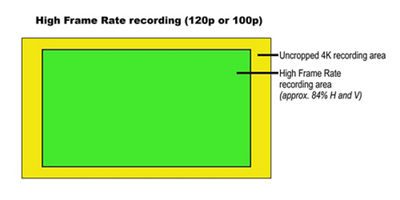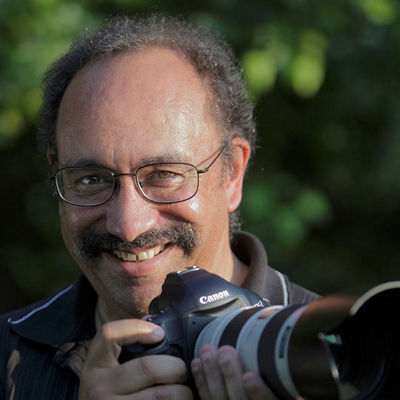The previous Canon EOS 70D and subsequent EOS 80D cameras have been powerful mid-range multimedia cameras for many vloggers, video creators, and still-image photographers. In 2013, the EOS 70D launched Canon’s Dual Pixel CMOS AF capability, which remains one of the industry’s best AF systems for video and Live View images. Introduced three years after the 70D, the EOS 80D continued that legacy, cementing the camera’s reputation as a tremendous value, and excellent DSLR for video use.
In 2019, Canon introduces the EOS 90D, and this camera further raises the bar as a strong multimedia content creator. In this article, we’ll highlight some of the new video-oriented capabilities that the EOS 90D brings to Canon photographers.

Uncropped 4K video
The Canon EOS 90D can record 4K, UHD video using the entire width of its APS-C size image sensor. Basic 4K recording capabilities include:
- Recorded at 29.97 fps (NTSC) or 25.00 fps (PAL)
- Choice of uncropped 4K video, or 4K from a cropped, 16:9 area of the image sensor (via a separate “4K movie cropping” menu option). Coverage with 4K movie cropping enabled is roughly 83% of that when the full sensor width (uncropped) is selected.
- Approx. 120 Mb/sec bit rates, for 4K video (uncropped and cropped); 4K video recorded with IPB (Standard) video compression. There is no option for “ALL-I” video compression on the EOS 90D.
- Dual Pixel CMOS AF operates when recording 4K video with the 90D
The EOS 90D is Canon’s first digital SLR to offer 4K recording from an uncropped, 16:9 area of the image sensor. This takes full advantage of the horizontal coverage of any lens you attach to the EOS 90D, especially useful for ultra wide-angle coverage.
In all movie recording quality settings, the EOS 90D records strictly in MP4; the MOV setting previously available on the EOS 80D cannot be set on the 90D.
Full HD and HD video recording
- Full HD, 1080p video recording at 59.94 fps (50.00 fps in PAL), or 29.97 fps (25.00 fps in PAL)
- HD video (720p) can be recorded at 59.94 fps (50.00 fps in PAL)
- Full HD and HD video are recorded in IPB (Standard) video compression; there is an option for Full HD (1080p) to be recorded in IPB (Light).
- Approximate recording bit rates:
Full HD 60p — approx. 60 Mb/sec
Full HD 30p — approx. 30 Mb/sec
Full HD 30p / IPB (Light) — approx. 12 Mb/sec
High Frame Rate movies
EOS 90D can record Full HD (1080p) video at 119.88 fps (100.00 fps in PAL), for slow-motion effects. High Frame Rate is enabled via a separate Menu command, under Movie record quality.
Several features are not available when recording High Frame Rate, 120p (100p) video in the Canon EOS 90D:
- Audio recording
- Movie Servo AF
- Movie Digital IS
Regardless of SD card size or speed, the maximum continuous recording time for High Frame Rate movies is 7 minutes 29 seconds (actual recording time, not playback time). Recording will stop automatically if this is exceeded.
High Frame Rate movies are slightly cropped in-camera, as indicated directly below:

Movie Digital IS added
Five-axis Electronic Image Stabilization at the image sensor is possible during all video recording, with the exception of High Frame Rate (120p/100p) recording. Users have the choice of Disabled, Enabled, and Enhanced, in the camera’s shooting Menu. Both the Enabled and Enhanced settings will crop the final recording area, but this will be reflected on the LCD monitor during recording.
Face Detect AF and Eye Detect AF possible during video recording
Users have choice to enable Movie Servo AF (continuous focusing during recording); AF Method (area used for AF during video recording, including Face Detect + Tracking); and Eye Detect AF — all as separate Menu items, in the red Shooting Menu when the 90D is set for video recording.
HDMI out capability
A choice of 4K or Full HD video recording via HDMI is possible; users select from the following on the EOS 90D menu under “HDMI info display:”
- HDMI-out with info
- Clean / 4K output
- Clean / Full HD output
Thus, the EOS 90D is ready for direct HDMI recording to compatible third-party video recorders, as well as various accessory monitors during recording. When either of the Clean HDMI output options are selected and the camera is connected to a recorder, no image is recorded to an in-camera memory card.
Memory card requirements
EOS 90D uses a single SD-type memory card, and is compatible with UHS-II type SD cards. Minimum card performance requirement for 4K video recording:
- UHS-I card; UHS Speed Class 3 or higher
Other video features and notes
- Basic color sampling is 4:2:0 (8-bit); Color matrix is Rec.ITU-R BT.709
- Vari-angle LCD monitor — 3-inch diagonal size, aspect ratio 3:2, approx. 1.04 million dot resolution, and full touch-screen capability
- 3.5mm diameter stereo headphone terminal; 3.5 mm stereo external mic jack
- In-camera audio adjustment over 64 levels
- 4K or Full HD Time Lapse movie shooting possible; user-set intervals from 2 sec. — 60 minutes; up to 3,600 frames possible
- Full HD (1080p) HDR movies possible in-camera; recorded at 60p (every other frame under-exposed), final HDR video file is played-back at 30p. Canon’s HDR movie protects highlight detail in contrasty scenes.
- Frame Grab from 4K video possible (select frame during video playback, on camera’s LCD monitor). Separate 8.3 million pixel JPEG image is written to memory card.
- Canon Log and Time Code are not included in the EOS 90D
Summary
First and foremost, the EOS 90D now is 4K-capable, using the entire width of its imaging sensor — a first for Canon EOS DSLRs. Combined with its proven Dual Pixel CMOS AF system, the 90D continues to be a terrific option for one-person video recording. The Full HD, High Frame Rate recording at 120 frames per second adds another powerful creative option for vloggers and video content creators. Any Canon EF-S or EF lens can be used, providing tremendous visual opportunities and options for creative video imagery.
Combined with its still-imaging capabilities — 32.5 million pixel resolution, 10 fps shooting speed, and a proven 45-point AF system — the EOS 90D continues to be both a tremendous value, and an excellent multimedia platform for users who want to leverage both still and video imagery.
All Canon contributors are compensated and actual users of Canon products promoted.






